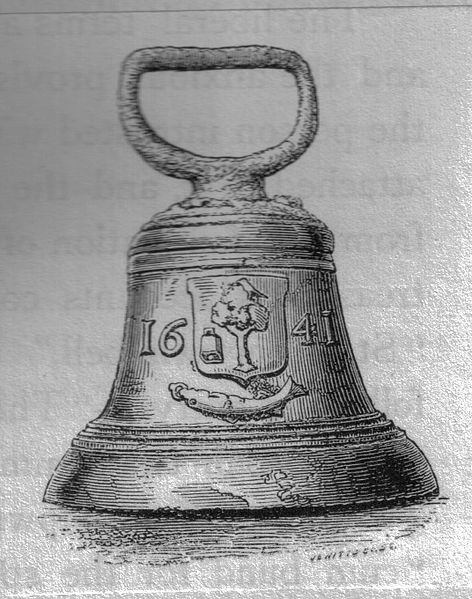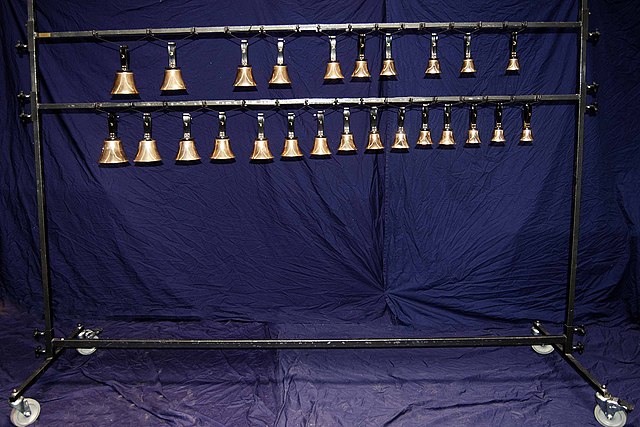A dead bell or deid bell (Scots), also a 'death', 'mort', 'lych', 'passing bell' or 'skellet bell' was a form of hand bell used in Scotland and northern England in conjunction with deaths and funerals up until the 19th century.
The 1641 Glasgow ‘deid bell’, now on display in Glasgow's People's Palace on Glasgow Green. The bell features the city's coat of arms: the tree, the bell, the fish and the bird, recalling events from the life of St Mungo.
The funeral procession of Edward the Confessor to Westminster Abbey as depicted on the Bayeux Tapestry. Note the dead bells held by the two people next to (below) the deceased.
A handbell is a bell designed to be rung by hand. To ring a handbell, a ringer grasps the bell by its slightly flexible handle – traditionally made of leather, but often now made of plastic – and moves the arm to make the hinged clapper strike the inside of the bell. An individual handbell can be used simply as a signal to catch people's attention or summon them together, but handbells are also often heard in tuned sets.
Handbell
Two English handbells, manufactured by Whitechapel Bell Foundry
Handbell choir practicing
Hand bells hung chromatically from stand






